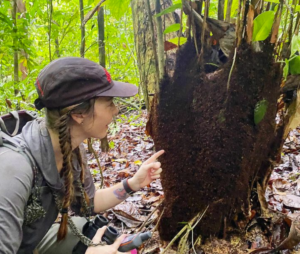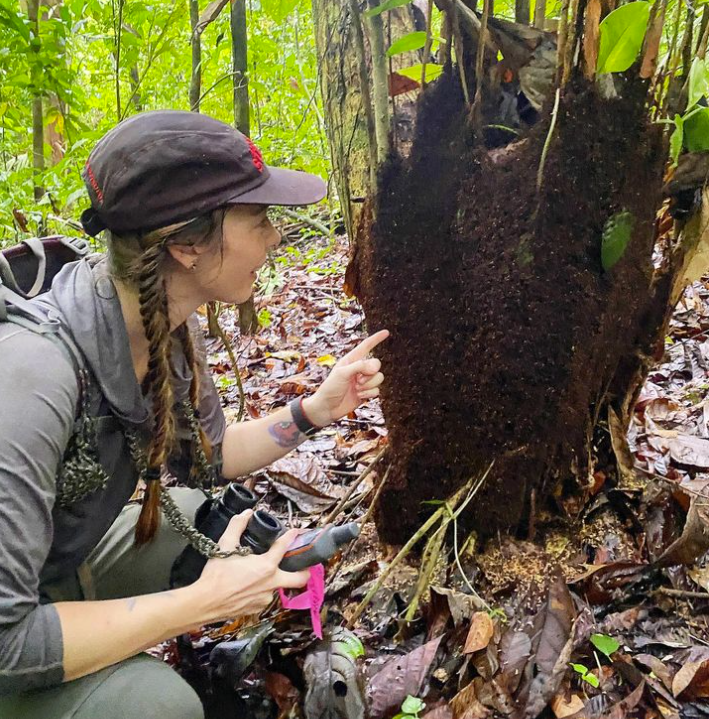
Student Highlights: Bri Agenbroad
— MEET BRI —
Class: Senior
Major: Wildlife & Fisheries Biology & Management
Bri Agenbroad grew up in an urban environment, but her passion for wildlife ecology was ignited after accepting a life-changing career as a kayak guide in Alaska. From there she traveled the country working various seasonal guide positions and chasing adventure. Bri loves science and enjoyed weaving recent wildlife and ecology research into her tours.

Eventually, curiosity got the better of her and she set off to pursue a B.S. degree in Wildlife Biology and Management at the University of Wyoming. She intends to continue her studies in graduate school. Bri currently splits her time between Laramie, WY, and Jackson, WY, where she and her doggos enjoy running, skiing, and rafting together.
— BRI’S RESEARCH —
Army ant swarms are a uniquely exciting phenomenon occurring in the Neotropics. These ants forage by marching across the forest in carpet-like raids consisting of thousands of ants. They are foraging for arthropods to bring back to their bivouacs for the night, evicting their prey from every leaf, hole, and crevasse they encounter. The excess of arthropods flushed by army ants presents a convenient and abundant resource for avian insectivores that is, presumably, a more energy-efficient source of prey than other foraging strategies. Multiple species attend these events resulting in competitive interactions where more dominant species alter the resource-attaining behavior of less dominant species through physical interactions and displays. However, the composition of these mixed-species groups is varied and can be fluid.
Army ant swarms are known to play a critical role in neotropical rainforests and have recorded associations with over 550 species across taxa, including 12% of neotropical bird species. Some of these bird species derive over half of their diet from ant swarms. Competitive interactions are risk and energy consuming, which presents a foraging trade-off: either eat or fight. Nevertheless, the quality of the prey resource may outweigh those costs. Bri’s research focuses on: (1) identifying the patterns and underlying mechanisms that influence the varying amounts of competition at swarms; and (2) understanding how species vary in their respective roles and what mechanisms influence competitive advantage.
ABOUT STUDENT HIGHLIGHTS
Every year, we award fellowships to graduate and undergraduate students attending the University of Wyoming or one of Wyoming’s community colleges in order to provide them with the opportunity to do “real” research. Occasionally, we feature one of these students and their research on this blog. For more information about our student fellowships, visit our College Programs page.
The post Student Highlights: Bri Agenbroad appeared first on Wyoming NASA Space Grant Consortium.





















